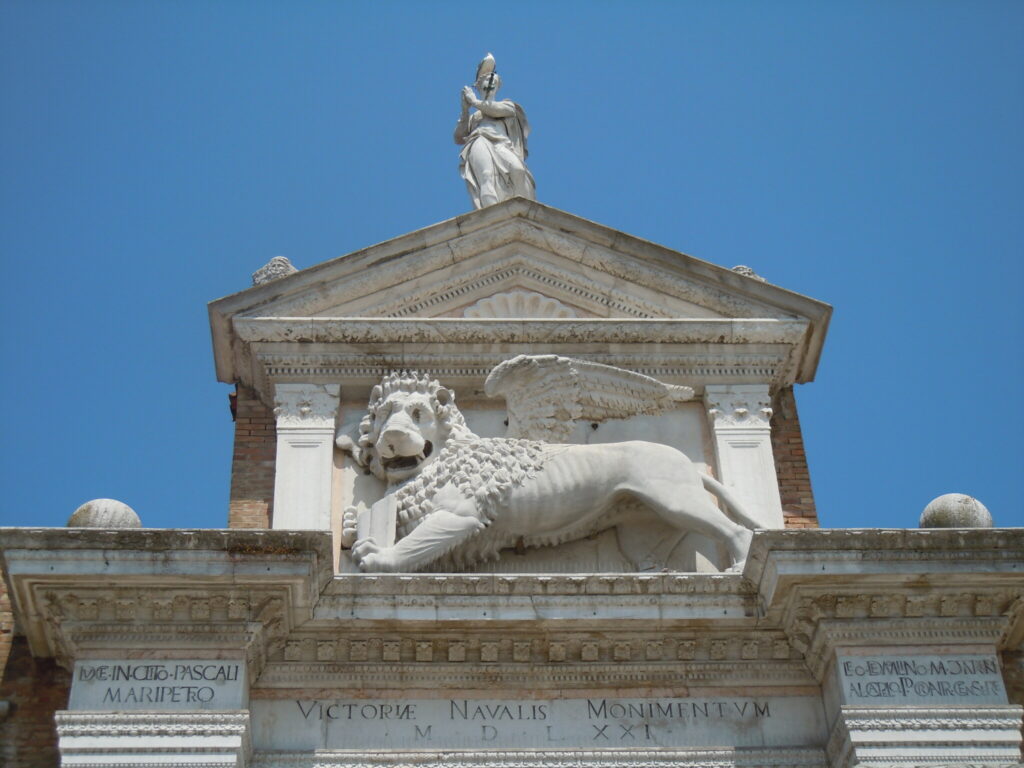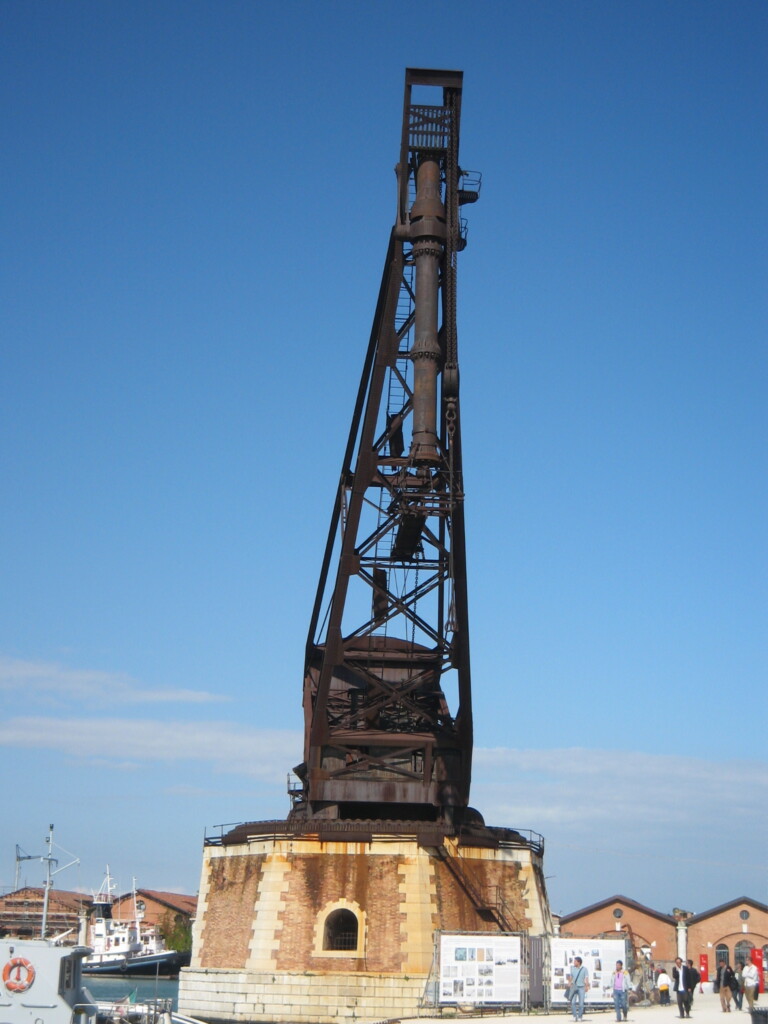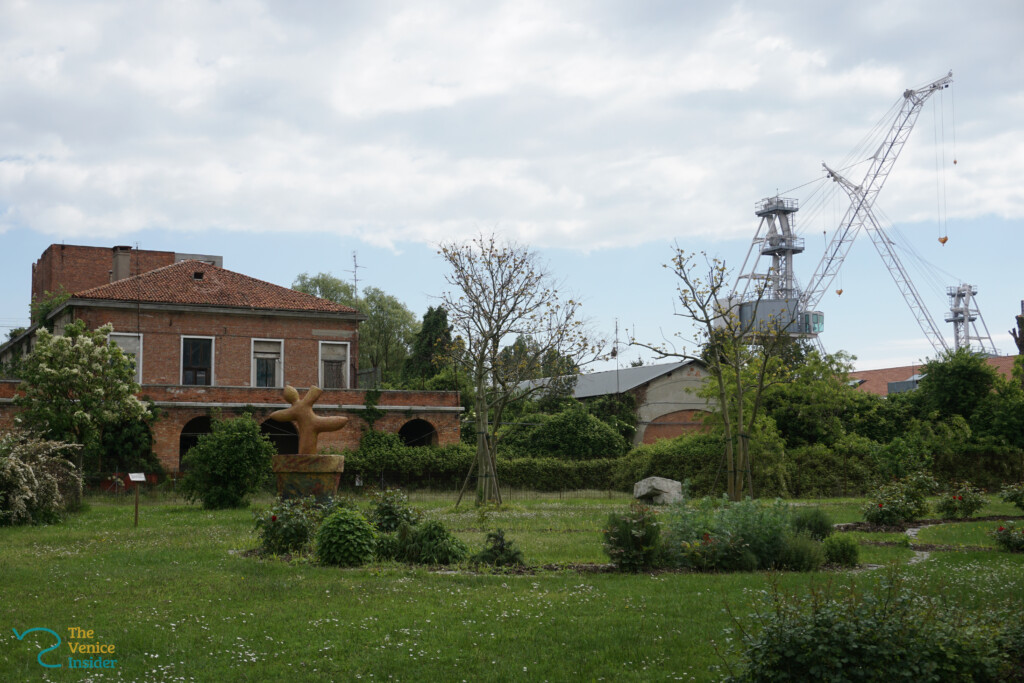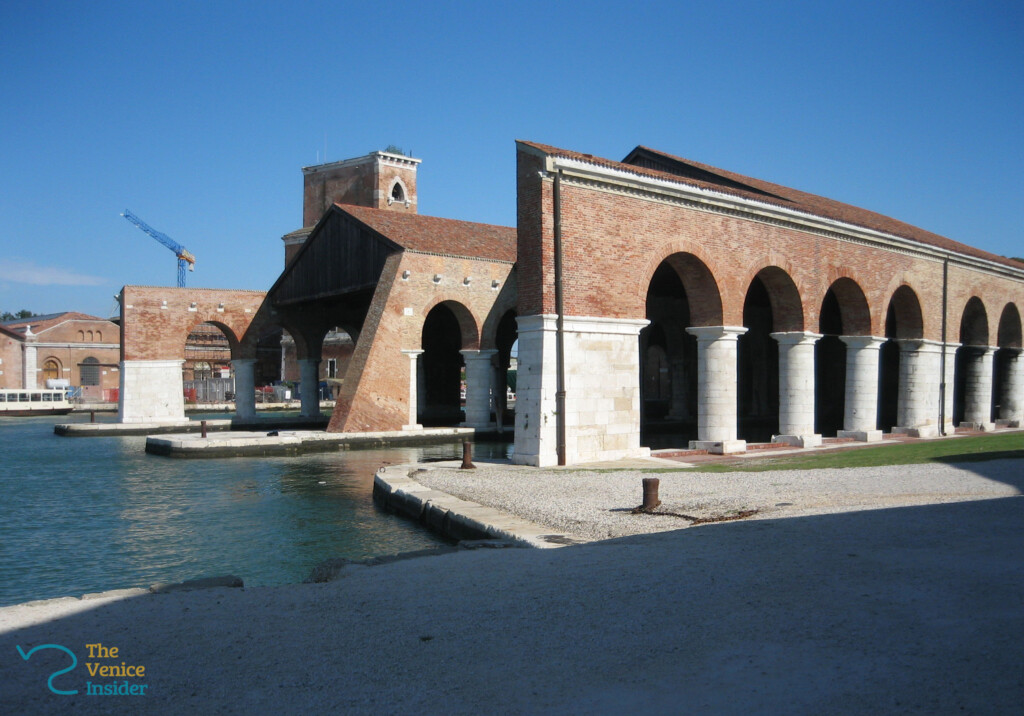The Arsenale is one of the landmarks of Venice which has been instrumental to the historical, economic and political power of la Serenissima over the world. Every passer-by has certainly admired the beautiful gate and tried to look inside. Nevertheless, the huge walls still seem to hide its history and even more so, its recent transformation. There are however plenty of opportunities to get inside the Arsenale, such as a visit to the Biennale exhibition or simply by entering on the north side.
In this post, I will give you some insights on its history as an industrial center, but also on the current changes towards a multipurpose, open site. Finally, you will get some insider tips on how you can discover it yourself.
The largest industrial complex in Europe
The origins of the Arsenale date from around 1150 – 1200, with the first official document referring to it being dated in 1220. The Arsenale was also mentioned in Dante’s poem Inferno in the 14th century. Over time, the area was enlarged 8 times, with the last extension in 1916. It encompasses now a total surface of approx. 45 ha.
The Arsenale started as a shipyard for the state of Venice and built warships and commercial ships. The latter were also equipped with arms, and could be claimed and deployed immediately in case of war. Every step in the production process was under the control of the Arsenale, starting from an own forest in the Veneto region for the wood supply. The workers also produced cord and weapons such as fireams, hand-guns, bombards and crossbows. As an unfortunate consequence, parts of the site were destroyed twice (in 1440 and 1568) by explosions in the gunpowder warehouses.
DID YOU KNOW? Above the entrance gate ‘Porta di Terra’ to the Arsenale, you will notice that the San Marco lion is shown with a closed book. Normally, in times of peace, the San Marco lion is depicted with an open book, whereas a closed book symbolizes a war period. In this case, it was decided to use a closed book in reference to the war equipment that was produced behind the gate.

The employees were called Arsenalotti and were well-respected citizens in Venice. They were for instance the only ones who were allowed to steer the Bucintoro, the huge parade ship of the Dogue. In the Middle Ages, the Arsenale was the largest industrial complex in Europe, with a maximum of 16,000 employees at work. The normal staff levels ranged from 2,000 to 5,000 workers per day.
The Arsenale was at the forefront of operational excellence and lean manufacturing. It was the first location to introduce standardized parts, to work with highly specialized staff and to use a moving assembly line. While the Venetian workers already moved the boat along a canal from one work station to another in the 16th century, Henry Ford introduced this as a novelty in car manufacturing in the US in the 20th century. The Arsenale even used consultants such as Galileo Galilei to solve the shipbuilders’ problems related to ballistics and to come up with innovations in production and logistics.
DID YOU KNOW? According to some legends, the Dogue used the expertise of the Arsenale to impress his official guests. The Arsenalotti would then build a complete ship from scrap during the time of his gala dinner.


From military zone to multipurpose site
After world war I, the Arsenale became an Italian military zone. However, since the transfer of part of the site from the Italian government to the city of Venice in February 2013, the Italian marine only occupies 41% of the area. It houses the technical and logistical command center for the Adriatic Sea, as well as the Naval War College (Istituto di Studi Militari Marittimi) and a library.
When the city of Venice received part of the Arsenale in 2013, they created the Ufficio Arsenale to define the future strategy and the redevelopment and promotion of the site. In the meantime, parts of the area have been given in concession (for free, as part of the deal with the state) to the Biennale di Venezia and to the Consorzio Venezia Nuova to house the operations of the Mose project.
Since then, there are plenty of opportunities to visit the Arsenale. The Ufficio Arsenale organizes open days from time to time, as well as educational events for children and young people. Puntomose (the Mose info center) and the Arsenale Nord are also open for visitors on weekdays (from 8.00-15.00, not in the weekend). There is also a small park with a sculpture garden. Walking around this part of the Arsenale gives you a good overview of the size of the area, and of the different buildings on the other sides of the docks, such as the military area and the area of the Biennale. If you visit the north side during the Biennale, you will also have the opportunity to visit some of the exhibitions.



TIP: Make sure to make a walk on the steel walkway above the water of the laguna, near the entrance of the Arsenale Nord. It might be a bit scary to stand so high above the water, but you will feel all alone in Venice and be overwhelmed by the power and beauty of the water.
Alternatively, you can attend one of the many events that are now being organized within the Arsenale, such as the Art Biennale, the Arsenale Nights of Carnevale or the Premio Arte Laguna expo.
Buon divertimento!

I Love Venice it is one of my favourite Cities I have visited Venice twice once by my self and once with my mother and friends. I love St Marks square and the Doge Palace
Hi Brian, these are indeed beautiful places. Do you plan another visit to Venice in the (near) future?
All the best
Katia